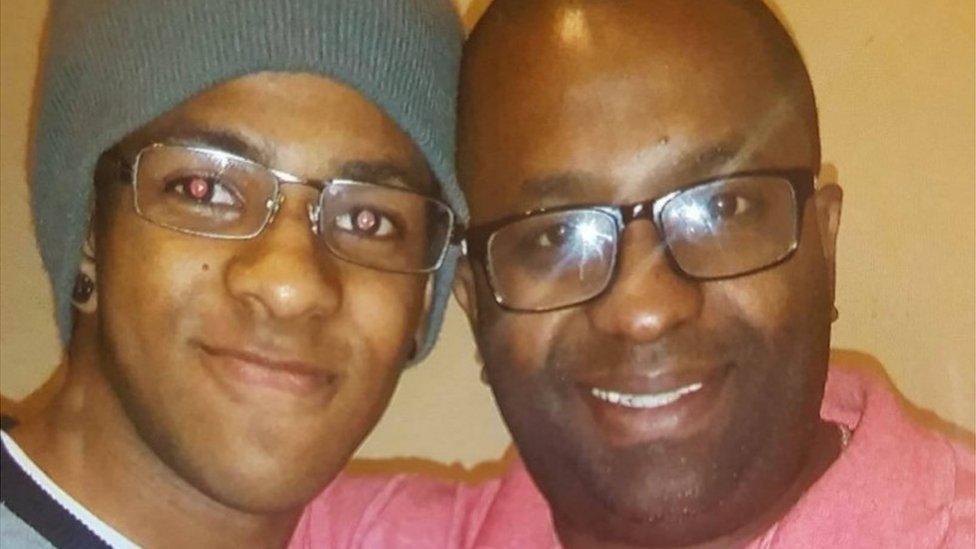Camber Sands deaths: Family anger over safety measures
- Published
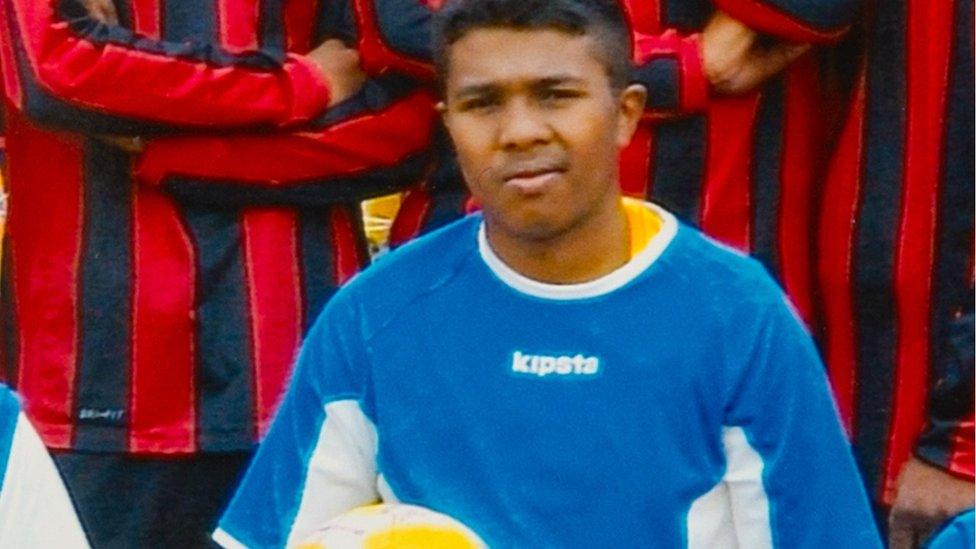
Nitharsan Ravi's family have said the beach should have been closed
The family of one of the five men who died at Camber Sands have spoken of their anger that the beach was not shut after another death there last month.
Relatives of Nitharsan Ravi, 22, have also criticised the lack of lifeguards on the stretch of Sussex coastline.
Last month, 19-year-old Brazilian Gustavo Silva Da Cruz died while swimming in the sea there.
Rother council has said beach patrols are available to advise beachgoers of potential dangers.
Mr Ravi's sister Mayura, 17, said the family felt anger that the stretch of beach where they died had not been blocked off following Mr Da Cruz's death last month.
'Two had heartbeats'
She said: "Why didn't they do it before? They could have saved five other lives."
Another of Mr Ravi's relatives, Mira Lawrence, from Plumstead, south east London, said: "We don't want to lose more people. It shouldn't happen to anyone. What if it's little kids, families? It's just more devastation."
His brother Ajirthan, 19, said: "There wasn't any lifeguards cruising around.
"Because they would have quickly noticed these boys drowning, and could have at least save their lives."
The other men who died have been named as Inthushan Sri, brothers Kobi and Ken Nathan, from Erith in south-east London, and another named only as Kurushanth.
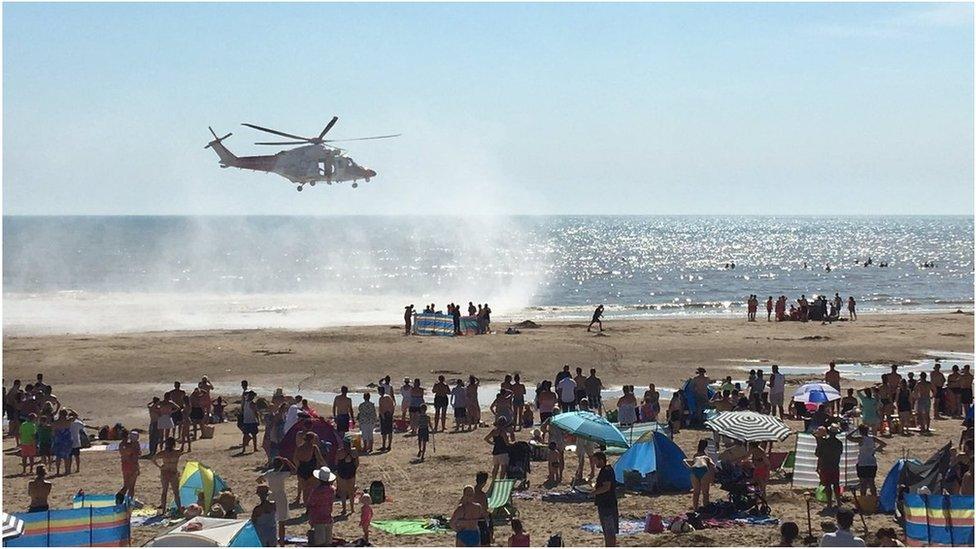
Three of the men were pulled from the water on Wednesday

Police cleared the beach after the first three men were brought out


At the scene, BBC reporter Frankie McCamley
A vast beach stretching seven miles (11km) long, Camber Sands attracts about 25,000 people on a busy day and reaction there has been mixed.
Although people have been out enjoying the sunshine, building sandcastles and playing in the sea, it's not difficult to find a family whose mood has been altered by the five deaths. A cloud of caution overhangs.
Some tell me they simply have not let their children in the water because they are worried about the sea itself - and they don't feel safe without lifeguards.
Others are in shock and want to keep their children close.
But some beachgoers are not letting events cloud over their day at the beach.
Families who have been coming here for years have said the sea is completely safe and will continue to holiday here.
But all agree - they are grateful to see beach patrols in the area.

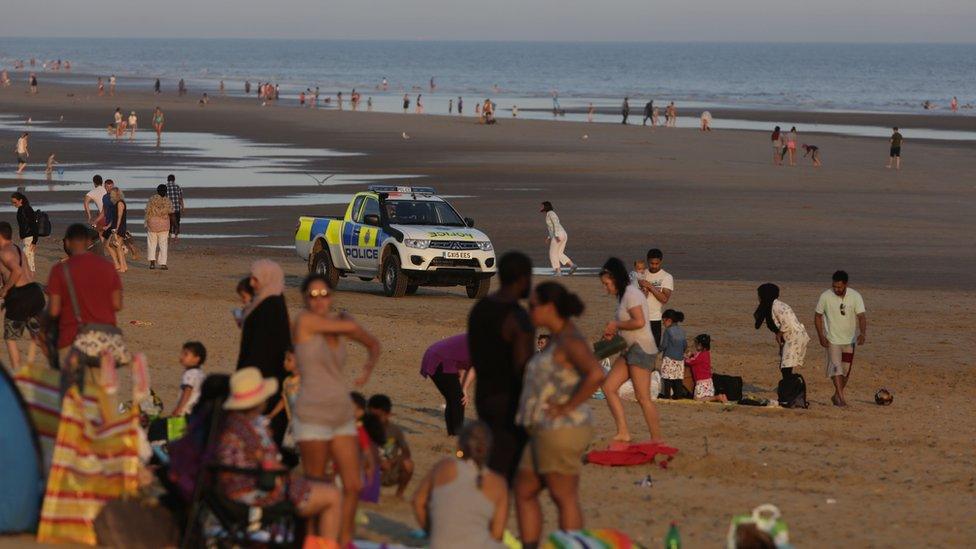
Emergency services were called to Camber Sands at about 14:10
Ajirthan said his brother died after trying to rescue two of his friends who became trapped underneath the water.
"Ken and Inthushan got stuck in water. So what they do is, the three boys try to save them," he said.
How to stay safe at the beach and in the sea
But he said their efforts failed and Kurushanth was brought out first and declared dead.
Two others, his brother and Kobi Nathan, showed signs of life but died within 15 minutes after being brought out of the water.
"My bro and Kobi had heartbeats and managed to survive for a few minutes but after first aid they couldn't recover," he said.
He said the bodies of Ken Nathan and Mr Sri were discovered later.

The beach was cleared after the bodies were recovered and the public were asked to stay away
An online petition calling for lifeguards at Camber Sands has been signed by more than 4,000 people.
Local resident Emily Van Eyssen, 44, said the need for lifeguards was long overdue.
Other family and friends of the victims have been paying tribute to them.
A friend of Mr Ravi's, Charles Bosco, 27, from west London, described him as a "fun, bubbly guy" and added: "No-one could say a bad word about him."
Sea dangers
And paying tribute to Mr Sri, Ranu Kumar wrote on Facebook: "Was one of the best genuine, one of my closest cousins in UK."
The men were on a day trip from London to the Sussex resort on Wednesday.
Police said the group were in their late teens and early 20s.
Rother District Council said while it was upsetting to see two similar, tragic incidents this summer, over the years these kinds of incidents were "extremely rare".
A spokesman said: "On a fine day around 25,000 people use the beach safely.
"Our beach patrols are on site throughout the summer and are able to advise people of potential dangers, reunite lost children and deal with any incidents on the beach."
The council also said it was too early to draw conclusions about the incident but it would continue to work with the emergency services and other colleagues to do more in educating people about the dangers of the sea.

Those who tried to help to save the men have described the efforts.
Hannah Chatfield, who was with her family, helped drag one from the water. She said: "The first man was pulled out of the sea unconscious, maybe 20 minutes later a woman came over shouting, and saying there's more in there.
"Me and my boyfriend went to get him because the lifeguards were with the first guy. We were on the beach for about 45 minutes trying to resuscitate him but it didn't work."
Rescuer Deven Small said: "I walked over to the scene and I could see a few people holding someone but his head kept on going in and out of the water.
"I ran in and helped to carry him in. Adrenaline kicks in. I didn't want to, you're talking about someone's life on the line.
"It's not the nicest thing to see in the world, to see someone die in front of you."
Earlier, the RNLI said the men could have got into trouble after failing to realise how quickly the tide would come in.
Urging people to follow RNLI safety advice, external, it said it believed all five men fell into deep channels of water between sand-bars - mounds of sand created by wave and tide activity - which had been made deeper with the weekend storms.

What are sand-bars?
A sand-bar is a submerged or partly exposed ridge of sand or other sediment built up by currents in coastal waters that occur where waves break.
They are usually made up of sand but can also involve other granular materials, such as shingle or even boulders.
They are most pronounced in the heavy surf caused by storms.
Sand-bars are the most common cause of rip currents, which are generated by waves breaking over them.
The RNLI said that the sand-bars at Camber Sands were three feet deep and had been made deeper by the weekend storms. Satellite images of the area give an idea of how the sandbars create an uneven sea floor.
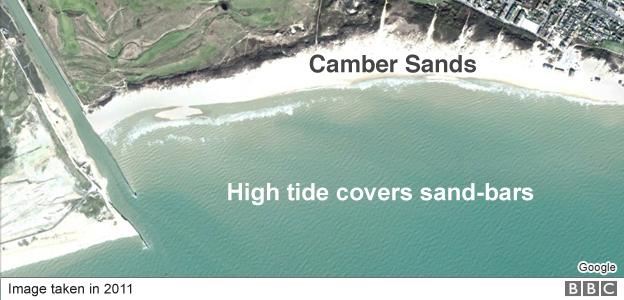


- Published25 August 2016
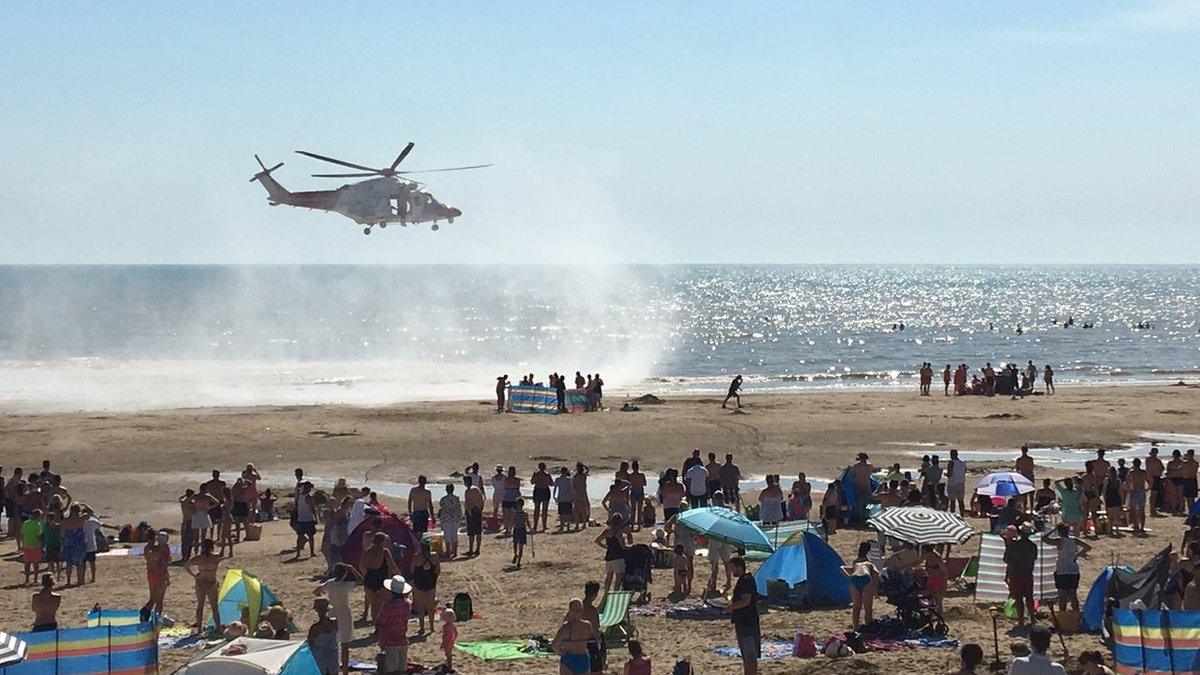
- Published25 August 2016
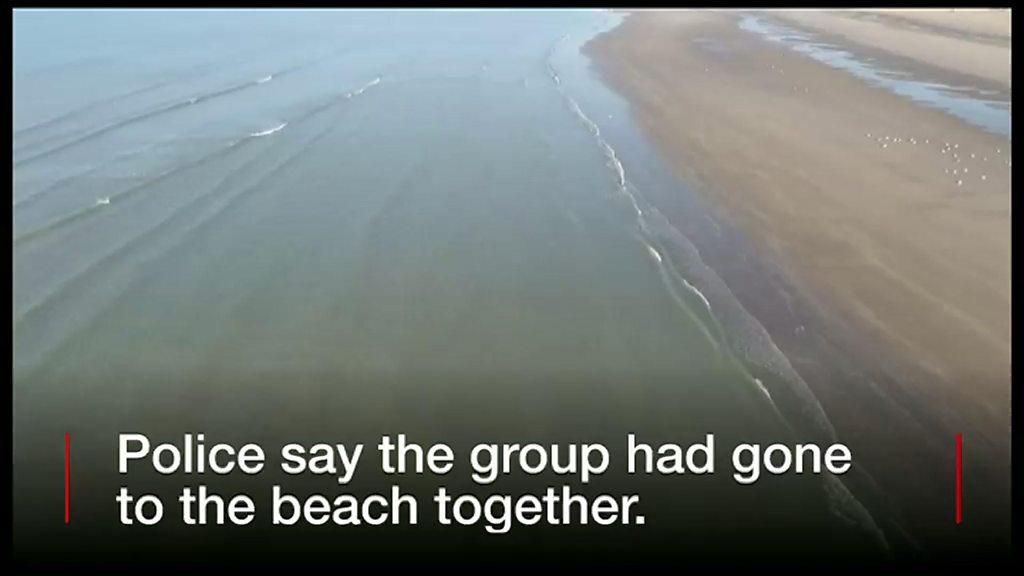
- Published24 August 2016

- Published25 August 2016
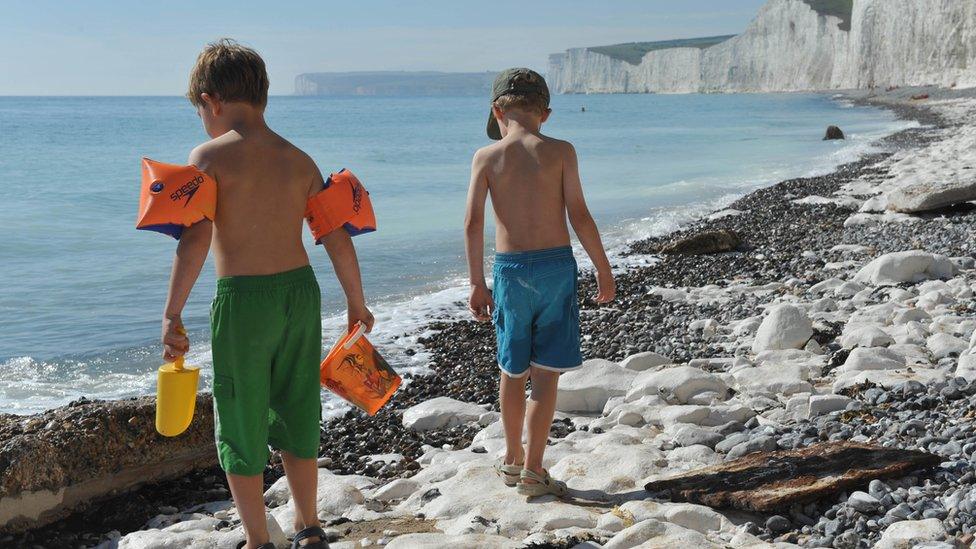
- Published22 August 2016
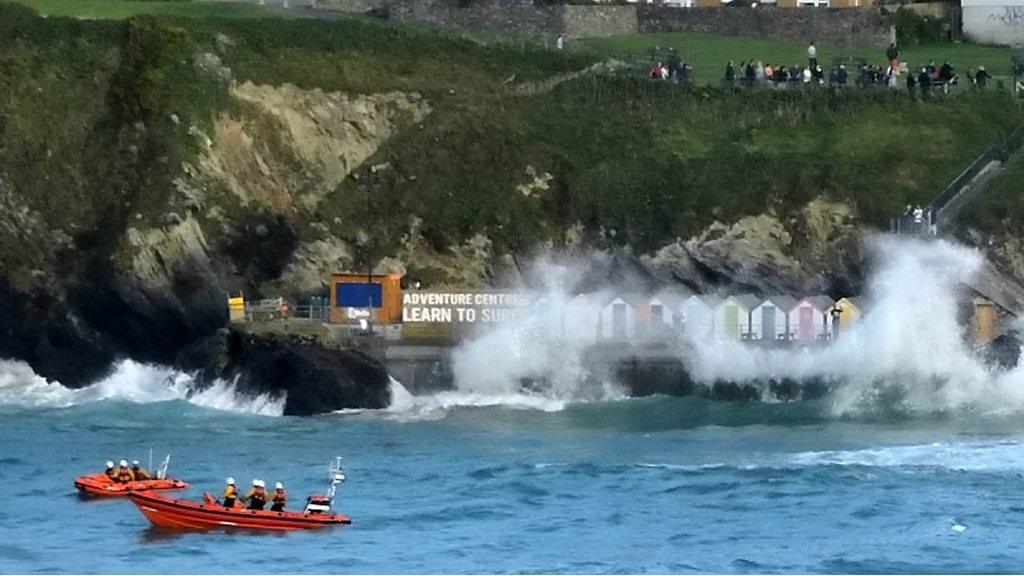
- Published25 July 2016
